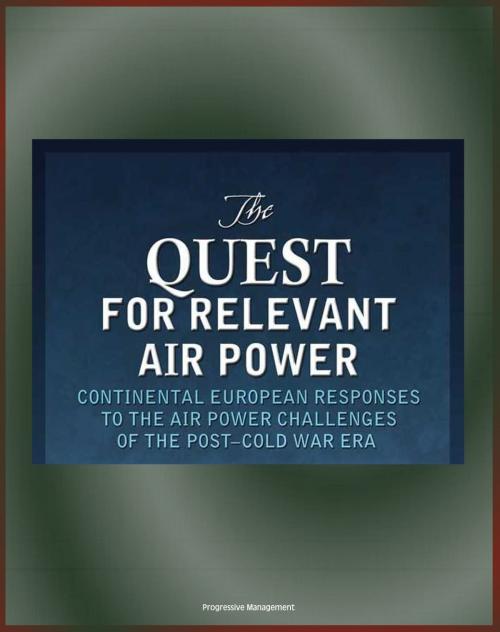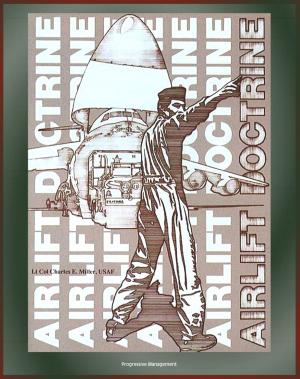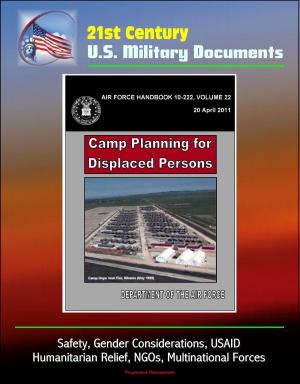The Quest for Relevant Air Power: Continental European Responses to the Air Power Challenges of the Post-Cold War Era - Allied Air Power and Air Forces, France, Germany, Netherlands, Sweden
Nonfiction, History, Military, Aviation| Author: | Progressive Management | ISBN: | 9781476054940 |
| Publisher: | Progressive Management | Publication: | June 9, 2012 |
| Imprint: | Smashwords Edition | Language: | English |
| Author: | Progressive Management |
| ISBN: | 9781476054940 |
| Publisher: | Progressive Management |
| Publication: | June 9, 2012 |
| Imprint: | Smashwords Edition |
| Language: | English |
The US accretion of all-weather precision munitions; stealth technology; netted real-time command, control, communications, and intelligence; unmanned aerial vehicles; and satellite systems has widened the gap with European air forces still further. The evolution and contribution of continental European air forces to recent operations remain largely unexplored, partly because of their limitations and partly because of Anglo-Saxon intellectual domination of air power analysis and concepts.
Christian Anrig examines the responses of four countries to the challenges of air power in the last two decades. He has selected four very different air forces: the French Air Force (FAF), German Air Force (GAF), Royal Netherlands Air Force (RNLAF), and Swedish Air Force (SwAF). All four were influenced by the Cold War period. The GAF and RNLAF were embedded in Cold War NATO, the SwAF maintained a well-armed neutrality, and the FAF reflected the semi-independent strategic stance of post-de Gaulle France.
The author addresses four questions: how have these air forces responded to post-Cold War political uncertainties, how have they operated, how have they responded to new air power thinking, and how have they adapted to the challenges of costs and technologies? He convincingly argues that budgetary provision has not been the most important factor in generating effective air power.
He traces the different interactions of political will, procurement, and operational effectiveness among the four air forces. All are highly professional, but only France has sought to sustain a capability across all air power roles.
Christian Anrig's examination is both instructive and disheartening. The United States operator and student will be enlightened by awareness of the quality, value, and proportional scale of recent and current European air operations. Anyone who is detailed to work alongside these air forces will benefit considerably from understanding how and why they do what they do. He or she will recognise the circumstances which have precluded them from the doctrinal path of John Warden. Sadly, the author has only too clearly identified the national features which, with one or two exceptions, are likely to inhibit the creation of European air power in the foreseeable future.
Contents: 1 Introduction * Air Power Challenges * Scope of Discussion * Overview * Notes * 2 Post-Cold War Challenges * Changing Strategic Context and Alliances * Employment of Western Air Power in Real Operations * Air Power Doctrine and Thinking * Force Structuring and Procurement * Notes * 3 FRENCH AIR FORCE (ARMEE DE LAIR) * How Has the French Air Force Adapted to the Uncertainties Created by Shifting Defence and Alliance Policies? * How Has the French Air Force Responded to the Challenges of Real Operations? * How Has the French Air Force Responded to the New Intellectualism in Air Power Thinking and Doctrine? * How Have French Defence Planners Attempted to Maintain a Relevant Air Force in Light of Escalating Costs and Advanced Technologies? * Conclusion * Notes * 4 GERMAN AIR FORCE (LUFTWAFFE) * How Has the German Air Force Adapted to the Uncertainties Created by Shifting Defence and Alliance Policies? * How Has the German Air Force Responded to the Challenges of Real Operations? * How Has the German Air Force Responded to the New Intellectualism in Air Power Thinking and Doctrine? * How Have German Defence Planners Attempted to Maintain a Relevant Air Force in Light of Escalating Costs and Advanced Technologies? * Conclusion * Notes * 5 ROYAL NETHERLANDS AIR FORCE (KONINKLIJKE LUCHTMACHT)
The US accretion of all-weather precision munitions; stealth technology; netted real-time command, control, communications, and intelligence; unmanned aerial vehicles; and satellite systems has widened the gap with European air forces still further. The evolution and contribution of continental European air forces to recent operations remain largely unexplored, partly because of their limitations and partly because of Anglo-Saxon intellectual domination of air power analysis and concepts.
Christian Anrig examines the responses of four countries to the challenges of air power in the last two decades. He has selected four very different air forces: the French Air Force (FAF), German Air Force (GAF), Royal Netherlands Air Force (RNLAF), and Swedish Air Force (SwAF). All four were influenced by the Cold War period. The GAF and RNLAF were embedded in Cold War NATO, the SwAF maintained a well-armed neutrality, and the FAF reflected the semi-independent strategic stance of post-de Gaulle France.
The author addresses four questions: how have these air forces responded to post-Cold War political uncertainties, how have they operated, how have they responded to new air power thinking, and how have they adapted to the challenges of costs and technologies? He convincingly argues that budgetary provision has not been the most important factor in generating effective air power.
He traces the different interactions of political will, procurement, and operational effectiveness among the four air forces. All are highly professional, but only France has sought to sustain a capability across all air power roles.
Christian Anrig's examination is both instructive and disheartening. The United States operator and student will be enlightened by awareness of the quality, value, and proportional scale of recent and current European air operations. Anyone who is detailed to work alongside these air forces will benefit considerably from understanding how and why they do what they do. He or she will recognise the circumstances which have precluded them from the doctrinal path of John Warden. Sadly, the author has only too clearly identified the national features which, with one or two exceptions, are likely to inhibit the creation of European air power in the foreseeable future.
Contents: 1 Introduction * Air Power Challenges * Scope of Discussion * Overview * Notes * 2 Post-Cold War Challenges * Changing Strategic Context and Alliances * Employment of Western Air Power in Real Operations * Air Power Doctrine and Thinking * Force Structuring and Procurement * Notes * 3 FRENCH AIR FORCE (ARMEE DE LAIR) * How Has the French Air Force Adapted to the Uncertainties Created by Shifting Defence and Alliance Policies? * How Has the French Air Force Responded to the Challenges of Real Operations? * How Has the French Air Force Responded to the New Intellectualism in Air Power Thinking and Doctrine? * How Have French Defence Planners Attempted to Maintain a Relevant Air Force in Light of Escalating Costs and Advanced Technologies? * Conclusion * Notes * 4 GERMAN AIR FORCE (LUFTWAFFE) * How Has the German Air Force Adapted to the Uncertainties Created by Shifting Defence and Alliance Policies? * How Has the German Air Force Responded to the Challenges of Real Operations? * How Has the German Air Force Responded to the New Intellectualism in Air Power Thinking and Doctrine? * How Have German Defence Planners Attempted to Maintain a Relevant Air Force in Light of Escalating Costs and Advanced Technologies? * Conclusion * Notes * 5 ROYAL NETHERLANDS AIR FORCE (KONINKLIJKE LUCHTMACHT)















